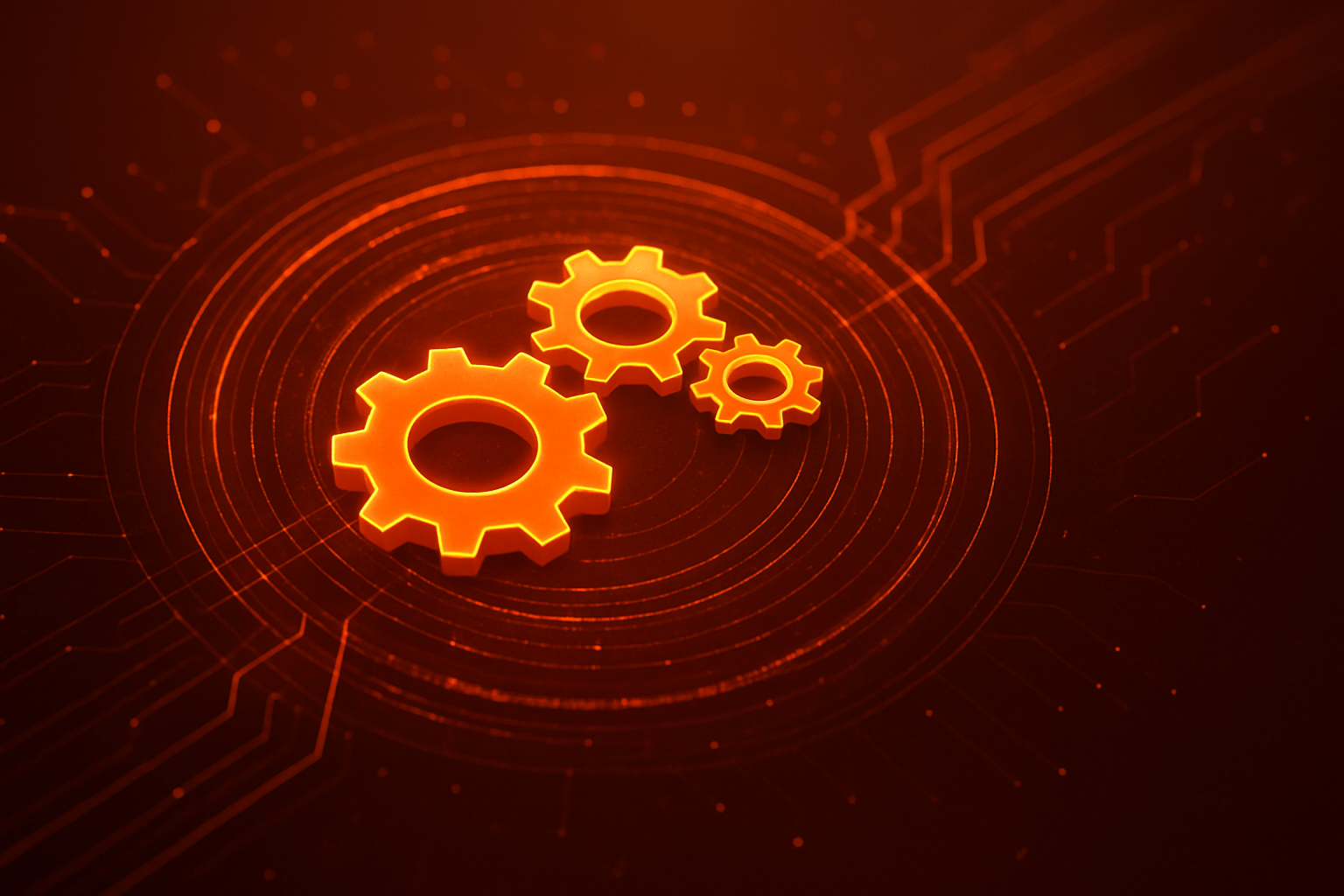Maintenance as the Hidden Profit Leak
Every executive in industrial manufacturing knows the feeling: a customer calls, their equipment has gone down, and suddenly an entire production line is idle. The clock is ticking, the service team scrambles, replacement parts are rushed out at premium cost, and the manufacturer eats into margins to keep the customer whole. It’s not just expensive; it’s reputation damage. Because every hour of downtime erodes the trust you’ve spent years building.
For decades, manufacturers leaned on two models to manage this risk: reactive repairs (“fix it when it breaks”) or scheduled preventive maintenance. Both models carry hidden costs. Reactive repairs mean catastrophic failures and unscheduled downtime. Scheduled maintenance, while safer, often wastes resources by replacing parts that are still functional. Either way, the result is margin erosion, inflated service costs, and customers left questioning the reliability of your equipment.
The irony is that most manufacturers already have the raw material for a better approach: IoT-enabled products pumping out streams of operational data. But data by itself doesn’t solve the problem. Without intelligence layered on top, it’s just noise, thousands of signals with no clear action. That’s where AI-driven predictive maintenance comes in. It’s not about collecting data; it’s about turning data into foresight, foresight into recommendations, and recommendations into actions that keep machines running when customers need them most.
The Stakes for Manufacturers
For an equipment manufacturer, predictive maintenance is not a “nice to have.” It’s a competitive necessity. Consider the stakes:
- Downtime is financial gravity. Every hour offline costs your customers revenue, and those costs often flow back to you through warranties, penalties, and reputational damage.
- Service is now part of the product. Customers don’t just buy equipment; they buy reliability, uptime, and confidence. If you can’t deliver those, someone else will.
- IoT is the expectation, not the differentiator. Connectivity is table stakes. The true differentiator is whether you can turn that connectivity into actionable recommendations that extend asset life and lower operating costs.
The future of industrial equipment won’t be defined by hardware alone. It will be defined by intelligence, the ability of your product not just to operate, but to anticipate, adapt, and protect the customer’s bottom line.
The Burden of Traditional Maintenance Models
Every manufacturer knows the two maintenance playbooks. Neither one really works, but they’ve both stuck around because, until recently, there wasn’t a better option.
The first is reactive. Wait until something breaks, then fix it. On paper it sounds lean—you’re not spending a dollar until the problem demands it. But in reality? It’s chaos. A bearing seizes in the middle of a production run, and suddenly you’re not just replacing a part, you’re apologizing for a late shipment, paying for rush service, and burning through goodwill with a customer who counted on you. The margin hit is one thing; the phone call explaining why their line is down is another.
The other model, preventive, feels safer. Swap the part every six months, whether it needs it or not. Stick to the calendar, and you’ll never get blindsided by a catastrophic failure. The catch, of course, is that you’re throwing away parts that still have life in them and paying technicians to perform work that didn’t need doing. It’s predictable, but predictably wasteful.
That’s the trap: reactive costs you when it breaks, preventive costs you when it doesn’t. Either way, you bleed. And customers see it too. They notice when downtime drags on, but they also notice when they’re footing the bill for maintenance that doesn’t feel necessary. In both cases, the story they tell themselves is the same—this equipment isn’t as reliable as it should be.
The frustrating part is that most modern machines are already covered in sensors. They’re sending out signals on temperature, vibration, power draw—constantly whispering about their condition. But without intelligence on top of that data, it’s just noise. Manufacturers end up clinging to old maintenance models even though the information for something better is already in their hands.
The Shift to Predictive Maintenance as a Manufacturer Strategy
Manufacturers don’t just sell equipment anymore. They sell uptime and reliability. When a customer chooses your product over a competitor’s, what they’re really buying is the promise that it won’t leave them stranded in the middle of a production run. That’s why the old maintenance playbooks feel so out of step with the world we’re living in now.
Predictive maintenance isn’t just another buzzword tossed around at trade shows, it’s a way to break out of that trap between reactive and preventive. Instead of waiting for a failure or servicing on a fixed calendar, predictive systems use the actual condition of the machine to tell you what needs attention and when. It’s a small shift in language, but a massive one in practice.
And here’s where it gets interesting for manufacturers with IoT-enabled products. You’re already collecting data from the field, streams of vibration readings, heat signatures, load cycles, and more. But most companies stop there. They show the data on a dashboard, pat themselves on the back for being “connected,” and leave the customer to figure out what it means. That’s not enough. Data without interpretation is a liability. It overwhelms the people you’re trying to help.
The real transformation happens when you layer intelligence on top of that data. AI system looks at the patterns, what happened before past breakdowns, which signals spike before a failure, how usage in one plant differs from another—and turns those signals into a recommendation. Not just “the motor is running hot,” but “replace the bearing within the next 200 operating hours or you’ll face a shutdown.” That’s the difference between insight and noise.
For the manufacturer, embedding this kind of capability isn’t just about reducing warranty claims or cutting service costs. It reshapes the customer relationship entirely. You stop being just the company that sold them a machine. You become the partner that keeps their operation running. And in industries where every hour of uptime has a dollar figure attached, that kind of trust is priceless.
This is why predictive maintenance isn’t only a technical upgrade—it’s a business strategy. Manufacturers who build it into their products create a moat that’s almost impossible for competitors to cross. Because once your customers start to depend on you for foresight, switching to another vendor feels like stepping back into the dark.
The Role of AI in Turning IoT Data Into Recommendations
IoT sensors are everywhere now. Manufacturers build them into motors, pumps, compressors, even small subassemblies. They record temperature spikes, unusual vibrations, voltage drops—thousands of signals every second. On the surface, that feels like progress. But raw data by itself doesn’t save a customer from downtime. In fact, too much of it can make things worse. A plant manager staring at endless dashboards isn’t empowered; he’s overwhelmed.
That’s where AI changes the game. It doesn’t just show you the readings—it studies the patterns buried inside them. A machine learning model can look at years of historical failures and find the signals that showed up right before each one. A spike in heat combined with a certain vibration frequency might predict a bearing failure. A drop in current draw during a load cycle might point to a motor winding issue. On their own, these signals are just noise. Together, they’re a fingerprint. AI recognizes it before a human ever could.
And here’s the key difference: AI doesn’t stop at detection. The real value is in recommendations. It’s one thing to know that a pump is trending toward failure. It’s another to be told, “Schedule a seal replacement within 48 hours to avoid downtime.” That shift, from reporting problems to prescribing action, is what elevates predictive maintenance from a buzzword to a business advantage.
Still, trust matters. Engineers aren’t going to follow a black box blindly. If the AI says, “Shut down this motor,” they want to know why. This is where explainability becomes essential. Good predictive systems don’t just spit out directives; they show the reasoning. They give the signals, the historical comparisons, the confidence levels. The best systems balance explainability with usability, showing enough reasoning to build trust without overwhelming users. That way, the technician isn’t just executing orders, they’re making an informed decision backed by evidence.
For manufacturers, this balance is crucial. If your system overwhelms customers with raw data, they tune it out. If it hides its logic, they don’t trust it. But when AI delivers recommendations in clear, actionable terms—while showing enough reasoning to back it up—you create something rare in the industrial world: foresight your customers can actually use. And once they trust those recommendations, they start depending on them. That dependency is what turns predictive maintenance from a feature into a business moat.
Designing the Predictive Maintenance Framework for IoT-Enabled Products
The promise of predictive maintenance sounds impressive in theory, but manufacturers don’t live in theory. They live in product roadmaps, warranty budgets, service contracts, and customer complaints that land on their desk at 2 a.m. To make predictive maintenance real, it has to be designed into the product itself and it has to fit the messy reality of how customers actually use their equipment.
It starts with the data pipeline. Sensors capture the raw signals—temperature, vibration, load cycles, amperage draw—and send them off to the cloud or, in some cases, to an edge device sitting right on the machine. From there, the AI engine processes those signals, compares them against historical patterns, and produces an output that isn’t just numbers, but a recommendation. And that recommendation has to land where it matters: in the hands of a technician, a plant manager, or even an automated scheduling system that generates a work order. If the loop isn’t closed, if the insight doesn’t translate into action, the whole system is just another dashboard gathering dust.
But here’s the nuance manufacturers often miss: recommendations have to be delivered in a form the customer can actually use. A PDF emailed once a month doesn’t help anyone. A blinking red light on a dashboard won’t cut it either. What works is integration into the workflows that already exist—alerts inside a CMMS, a mobile push notification a technician sees in the field, or a direct link to an ERP system that can trigger parts procurement automatically. Predictive maintenance fails not because the math is wrong, but because the delivery mechanism doesn’t fit the day-to-day reality of the people who need it.
Then there’s the feedback loop. Predictive systems aren’t static, they get smarter the more data they see. That means every customer’s usage pattern, every service report, every field failure is fuel for the AI engine. The manufacturer’s role is to capture that feedback, feed it back into the model, and continuously refine recommendations. The companies that build this loop into their product DNA will see their systems become more valuable over time..
And finally, there’s the human element. Predictive maintenance doesn’t replace expertise; it amplifies it. The AI can flag a vibration anomaly, but it’s the technician who knows whether it’s a bearing about to seize or just a machine operating under unusual load. By keeping humans in the loop, you create a system that customers trust.
For manufacturers, this framework is about building credibility into the product itself. Predictive maintenance isn’t an add-on; it’s a design choice that signals to customers: “We’re not just selling you equipment. We’re standing behind its performance.”
The Real Business Impact
Predictive maintenance isn’t some shiny tech slogan. It’s not about tossing “AI” onto a slide deck to sound futuristic. For a manufacturer, the proof lives in dollars that don’t leak out of the budget, in customers who stay loyal through the messy years, and in the new doors that open once you stop fighting fires all the time.
Cutting Costs Where It Actually Bleeds
Every breakdown has a story—an overnight scramble, a furious phone call, a production line brought to a dead stop. And every one of those moments burns cash. Predictive maintenance isn’t glamorous, but it saves you from those gut-punch expenses. Warranty claims shrink. You’re not rushing parts onto a plane at triple freight costs. Crews aren’t sleeping in their trucks outside a plant. And the machines themselves? They last longer when you swap parts on condition, not guesswork. Over a fleet of equipment, that discipline adds up fast—quietly, relentlessly, in the background.
What Customers Actually Notice
Ask a customer what they value most, and nine times out of ten they won’t say “features.” They’ll say, “Does it run when I need it?” Uptime is the only spec that matters once the purchase order is signed. Predictive systems make life boring in the best possible way—fewer surprises, fewer service calls, steadier costs. That kind of boring is addictive. It breeds trust. And trust is what keeps customers anchored to you, even when a rival waves a cheaper deal in front of them.
Where the Competitive Edge Really Lives
Anyone can tack on horsepower. Anyone can extend a warranty by twelve months. Those are numbers on a brochure. What they can’t copy overnight is the confidence your customers feel when your machines quietly protect their operations. Predictive intelligence turns the conversation. You’re no longer selling “a product.” You’re selling uninterrupted performance—and once people get used to that, everything else feels second-rate.
Opening Doors to Different Business Models
Here’s the part too many overlook: predictive maintenance isn’t only a cost saver, it’s a business model shaker. It lets you step into revenue streams that don’t depend on one-off sales. Monitoring services on subscription. Warranties that extend because the data justifies them. Even outcome-based deals where a customer pays you for uptime instead of hardware. That’s not a side hustle, it’s a complete reframe of your role. You stop being a supplier and become something closer to a partner embedded in their daily success. The same logic applies to quoting: AI-driven systems can compress RFQ cycles from 8 days to 48 hours, turning quotes into a competitive edge.
Overcoming Implementation Challenges
The case for predictive maintenance is compelling—but anyone who’s ever tried to roll it out knows it’s not a flip-the-switch upgrade. The obstacles aren’t just technical, they’re cultural, operational, and human. Success starts with naming those hurdles honestly and dealing with them head-on.
The Data Quality Problem
Every modern machine is dripping with IoT sensors, but more data doesn’t automatically mean better insight. In fact, it often means chaos. One sensor goes out of calibration, another drops readings halfway through a shift, and suddenly your “predictive” system is recommending a shutdown that makes no sense. That’s worse than useless—it kills trust. The first time a plant manager follows a bad recommendation and loses production hours for nothing, the entire system is written off as hype.
Integrating With Legacy Systems
Walk into almost any plant, and you’ll find the same thing: software that’s been running for twenty years, patched together with updates, shortcuts, and workarounds. It does the job, but it wasn’t built for AI. So when you try to drop a modern predictive system on top, it’s like bolting a jet engine onto a pickup truck—it just doesn’t fit cleanly.
That’s why so many early attempts fail. The insights look impressive on a dashboard, but they never reach the people who actually need them—technicians, planners, supervisors—because the old systems can’t talk to the new ones. And once again, trust erodes.
The fix isn’t ripping everything out and starting over. It’s meeting reality where it is: building compatibility, layering in APIs, and rolling out in phases so teams can actually use the intelligence without their daily workflows collapsing. Big-bang deployments sound bold, but in real life they create more resistance than results.
Overcoming Cultural Resistance
Technicians and service teams are experienced, skilled, and often skeptical of anything that looks like a “black box.” If an AI system tells them to shut down a machine without context, they’re likely to ignore it. Adoption requires transparency; explainable recommendations, training sessions, and a feedback loop where human expertise refines the model. When technicians see the system making their jobs easier instead of replacing them, trust follows.
Proving ROI to Leadership
CFOs and boards don’t care about sensor dashboards; their main care is about financial outcomes. Predictive maintenance has to be tied directly to avoided downtime, reduced warranty costs, and new service revenue streams. Pilots are the best way to make the case—start small, prove measurable impact, and scale from there. Without ROI, predictive maintenance will always be seen as an expense rather than an investment.
The Strategic Evolution: From Predictive to Prescriptive
Predictive maintenance solves one problem, but it also opens the door to a bigger conversation. When you can reliably forecast when something will fail, the next logical step is to shape the decision around what to do about it. That’s where prescriptive maintenance comes in, this is not just predicting a breakdown, but advising the best course of action to avoid it with the least disruption.
Imagine the difference between a system that tells you, “This motor will likely fail in 200 hours,” and one that says, “Reduce operating speed by 5% now, order a replacement coil, and schedule the swap during your regular downtime window. Follow that path, and you’ll avoid a $50,000 production loss.” One gives you information. The other gives you a plan. Customers don’t just want data—they want guidance.
For manufacturers, this shift is more than a technical leap. It changes the commercial model. When your machines start recommending specific actions, you’re no longer just a vendor of equipment. You become a partner in performance outcomes. That opens doors to new types of agreements. Customers begin to see you less as a supplier and more as a strategic ally in keeping their business running.
Over time, the destination is clear. Equipment that manages its own uptime. Machines that monitor themselves, adjust their own performance to avoid stress, and automatically book service before a technician even knows there’s an issue. It sounds futuristic, but the building blocks are already here: IoT sensors, AI-driven analysis, and prescriptive recommendations. The only question is who will put the pieces together first and set the new standard for reliability in the industry.
Early movers almost always shape the expectations of the market. Once customers experience equipment that doesn’t just break less often, but actually manages its own care, their definition of “normal” changes. Competitors stuck in the old model—selling specs and features—will feel like they’re offering yesterday’s product. That’s why the real opportunity isn’t just in catching up. It’s in leading the way toward the prescriptive future, where uptime isn’t promised—it’s engineered.
Turn IoT data into foresight, foresight into uptime.
Readiness Audit Checklist
How to Use: Run through this before investing in AI-driven maintenance. If you can’t check most boxes, your rollout will stall.
| Checkpoint | Why It Matters | Status (☑/☐) |
| IoT sensors actively collecting vibration, heat, load data | Without clean inputs, AI can’t predict failures | ☐ |
| Data pipeline to cloud or edge platform exists | Raw signals must flow somewhere processable | ☐ |
| Past failure logs available for training | Historical patterns = predictive accuracy | ☐ |
| Service team aligned on adoption | Without cultural buy-in, recommendations won’t be trusted | ☐ |
| Leadership ROI metrics defined | Must prove avoided downtime / cost savings | ☐ |
If you’re missing more than two checks, start with data cleanup + small pilot.
Behavior-to-Recommendation Mapping
How to Use: Map equipment signals to recommended actions so technicians know what to do, not just what’s wrong.
| Equipment Signal | AI Insight | Recommended Action |
| Vibration spike + rising heat | Bearing wear pattern | Replace bearing within 200 hrs |
| Drop in current draw under load | Winding insulation failure | Schedule motor coil replacement |
| Seal temperature above threshold | Imminent leak risk | Order seal + plan swap during next downtime |
| Abnormal cycle counts in one line vs. baseline | Overuse condition | Adjust load scheduling / redistribute usage |
This converts IoT “noise” into actionable foresight.
ROI & Uptime Impact Dashboard
How to Use: Track before/after metrics to prove financial value to leadership.
| Metric | Baseline | After 6 Months | Target |
| Average downtime per unit/year | X hrs | -50% | |
| Warranty claims cost | $X | -40% | |
| Wrong-time service calls | X/month | -60% | |
| Asset lifespan | X years | +20% | |
| Customer satisfaction (NPS) | X | +10 pts |
Uptime as a Competitive Currency
At the end of the day, everything circles back to uptime. A machine can have the best engineering specs, the strongest materials, the most impressive efficiency numbers on paper—but if it fails when a customer needs it most, none of that matters. Downtime is the universal language of pain in industrial manufacturing, and it’s where trust is either built or destroyed.
Predictive maintenance offers manufacturers a way to rewrite that story. Instead of reacting to failures or wasting resources on blanket service schedules, they can prove to customers that reliability is a measurable outcome. And when AI turns raw IoT data into clear, maintenance stops being a cost sink and starts becoming a competitive advantage.
But here’s the real shift: manufacturers who embed predictive intelligence into their products aren’t just saving money or avoiding headaches. They’re changing their position in the market. They stop looking like vendors and start looking like partners. They sell trust, foresight, and continuity—and in industries where a few hours of downtime can equal millions in losses, that positioning is invaluable.
The companies that hesitate will keep bleeding margins through warranty claims and service inefficiencies, all while their competitors reshape the customer relationship around performance guarantees. And once buyers experience equipment that actively protects their uptime, they won’t go back. The standard will have moved.
That’s why the time to act is now. If your IoT-enabled equipment isn’t yet delivering predictive recommendations to your customers, you’re already behind. The data is there, the tools are mature, and the gap between reactive and predictive is costing you more than you realize.
We help manufacturers make that leap. Not with another whitepaper, not with a “digital transformation” buzzword, but with a hard audit of your current service model and the gaps where AI-driven maintenance can immediately change the numbers. If you want to stop losing revenue to downtime and start selling reliability as a service, contact us. Let’s find out where your equipment can start working smarter—not just for your customers, but for your bottom line.











